We have spent some time with plywood boats over the last several years, both vintage and new, and a common problem that we have had to address is cracks that can develop in the outer veneer of the plywood. When plywood is made, the wood fibers are stressed from their original shape to form flat veneers, and over time the wood dries out and the fibers shrink. Repeated wet-dry cycles and sun exposure also can cause damage to veneer protected only by paint or varnish. The cracks, also referred to as checking, can be very fine or larger fractures that form a rough surface. At worst, there can be voids where bits of veneer have chipped off. The fir plywood deck was showing every bit of its age, some 70 years. The area in front of the sander has been partially sanded, removing the high spots created by the checking of the top veneer.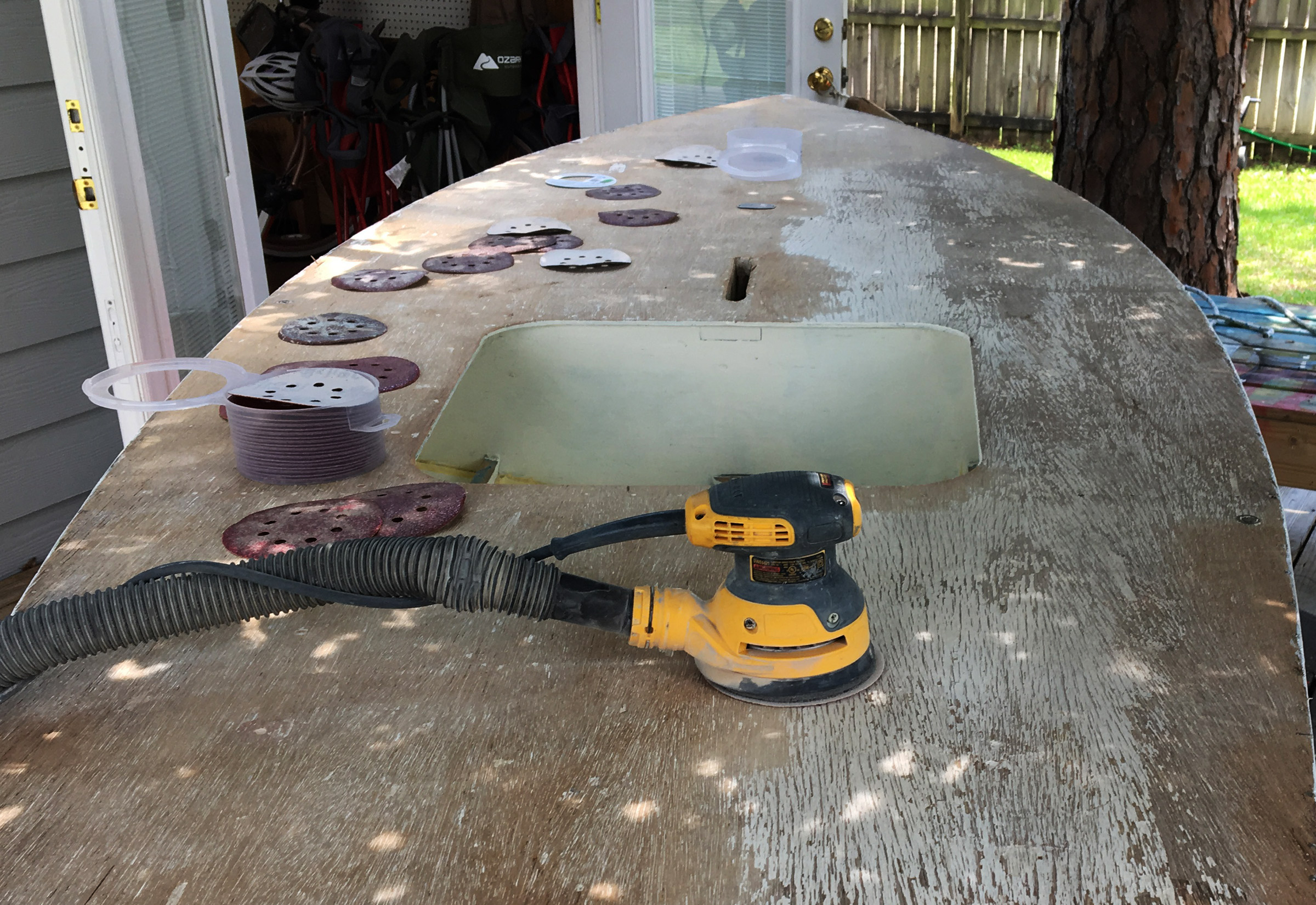 Photographs by the authors
Photographs by the authors
Join The Conversation
We welcome your comments about this article. If you’d like to include a photo or a video with your comment, please email the file or link.

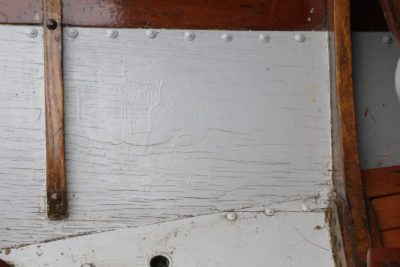
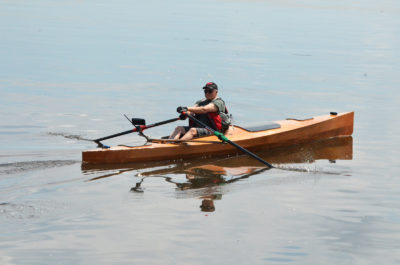
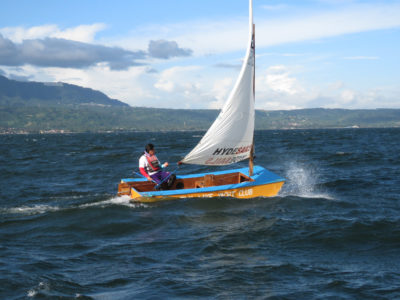
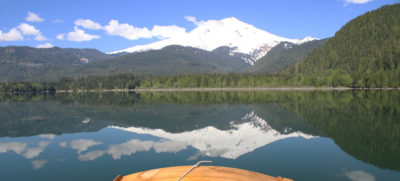
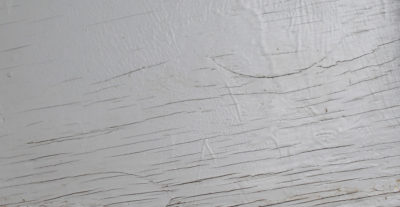
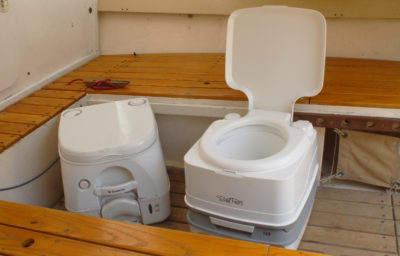
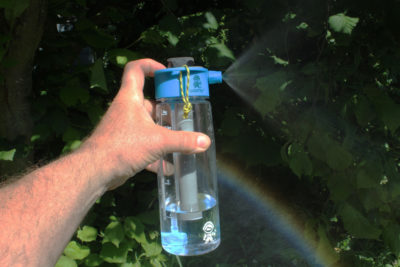
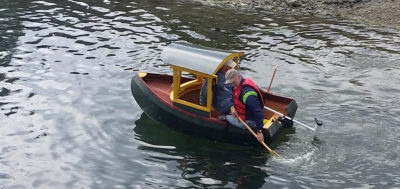
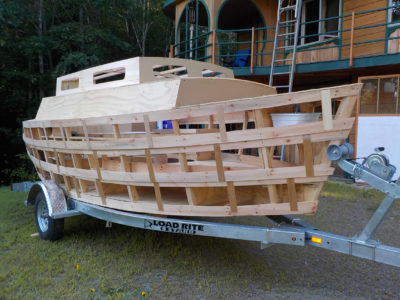
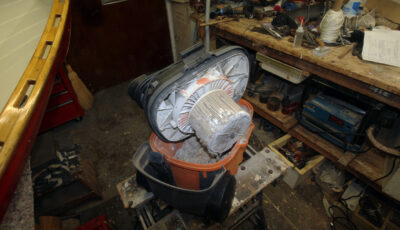
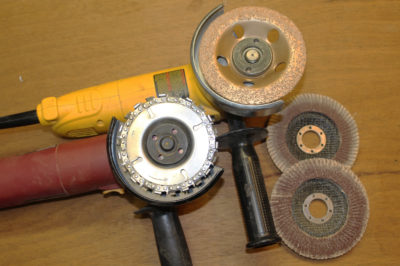

In my experience, Doug fir plywood is the worst of all. Because of this, I would never again build a small boat using the stuff. I have ‘glassed plywood hulls, but again, would not bother to do this with polyester resins, as I have seen delamination occur. I hypothesize that this happens because fir plywood (which has alternating hard and soft grain) doesn’t soak up polyester very well in those places where the grain is hard.
I know people who like vinyl ester, but I have no experience with it myself.
One advantage of epoxy is that it loves to seek the lowest point, and will run into crevices and fill them, especially if forced into the grain with a roller under pressure. I sometimes compare this tendency of epoxy to the behavior of honey on a piece of toast with holes in it.
A nice photo of restored plywood Sunfish ZIP, under sail, appears in on-line Antique Classic Boat Society, Sept. 17, 2015. Great piece of work.
I have built many small, simple boats with fir plywod. It’s strong, rot resistant, lighter than pine plywood and readily available from building supply stores. But it checks, oh Lordy, how it checks! I’ve used sealants, primers, epoxy resin, oil and latex paints. The boats have been stored mostly outside, under a tarp on a frame in shade. I live in a temperate zone (East coast, Chesapeake Bay). Here’s what I experienced:
Sealers, primers, fillers, paints don’t stop checking.
Epoxy coating slightly delayed checking, but never stopped it. Epoxy filling a checked piece only reset the clock for a couple seasons. And it was expensive in labor and material.
The only thing that worked was to glue a covering to the exposed surface. I’ve used fiberglass, Dynel, and unbleached cotton canvas. All worked great, no checking, ever.
An alternative is MDO (medium density overlay, or “signboard”) a fir ply with a heavy paper/resin veneer that never checks and glues and finishes beautifully. It has few/no voids. It comes 3/8” and up, coated on one or both sides. You won’t find it at BigBox stores, but other suppliers stock it or will order it for you. Prices are about halfway between plain fir and okoume (2021 prices). Pine plywood checks badly, too.